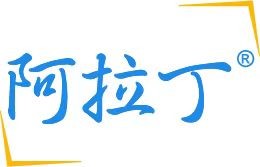Nature Protocols ( IF 13.1 ) Pub Date : 2022-10-14 , DOI: 10.1038/s41596-022-00742-2 Jia Ping Tan 1, 2, 3 , Xiaodong Liu 1, 2, 3, 4, 5, 6 , Jose M Polo 1, 2, 3, 7, 8
|
|
During early mammalian embryonic development, trophoblast cells play an essential role in establishing cell–cell interactions at the maternal–fetal interface to ensure a successful pregnancy. In a recent study, we showed that human fibroblasts can be reprogrammed into induced trophoblast stem (iTS) cells by transcription factor-mediated nuclear reprogramming using the Yamanaka factors OCT4, KLF4, SOX2 and c-MYC (OKSM) and a selection of TS cell culture conditions. The derivation of TS cells from human blastocysts or first-trimester placenta can be limited by difficulties in obtaining adequate material as well as ethical implications. By contrast, the described approach allows the generation of iTS cells from the adult cells of individuals with diverse genetic backgrounds, which are readily accessible to many laboratories around the world. Here we describe a step-by-step protocol for the generation and establishment of human iTS cells directly from dermal fibroblasts using a non-integrative reprogramming method. The protocol consists of four main sections: (1) recovery of cryopreserved human dermal fibroblasts, (2) somatic cell reprogramming, (3) passaging of reprogramming intermediates and (4) derivation of iTS cell cultures followed by routine maintenance of iTS cells. These iTS cell lines can be established in 2–3 weeks and cultured long term over 50 passages. We also discuss several characterization methods that can be performed to validate the iTS cells derived using this approach. Our protocol allows researchers to generate patient-specific iTS cells to interrogate the trophoblast and placenta biology as well as their interactions with embryonic cells in health and diseases.
中文翻译:

通过成纤维细胞重编程建立人诱导滋养层干细胞
在哺乳动物早期胚胎发育过程中,滋养层细胞在母胎界面建立细胞间相互作用以确保成功妊娠方面发挥着重要作用。在最近的一项研究中,我们表明,使用 Yamanaka 因子 OCT4、KLF4、SOX2 和 c-MYC (OKSM) 以及选择的 TS 细胞,通过转录因子介导的核重编程,可以将人成纤维细胞重编程为诱导滋养层干 (iTS) 细胞文化条件。从人类囊胚或妊娠早期胎盘中提取 TS 细胞可能会因难以获得足够的材料以及伦理问题而受到限制。相比之下,所描述的方法允许从具有不同遗传背景的个体的成体细胞中生成 iTS 细胞,世界各地的许多实验室都可以轻松获得这些细胞。在这里,我们描述了使用非整合重编程方法直接从真皮成纤维细胞生成和建立人类 iTS 细胞的分步方案。该协议由四个主要部分组成:(1) 冷冻保存的人真皮成纤维细胞的恢复,(2) 体细胞重编程,(3) 重编程中间体的传代,(4) iTS 细胞培养物的衍生,然后对 iTS 细胞进行常规维护。这些 iTS 细胞系可以在 2-3 周内建立,并长期培养超过 50 代。我们还讨论了几种可以用来验证使用这种方法衍生的 iTS 细胞的表征方法。我们的方案允许研究人员生成患者特异性 iTS 细胞,以研究滋养层和胎盘生物学以及它们与健康和疾病中胚胎细胞的相互作用。


















































 京公网安备 11010802027423号
京公网安备 11010802027423号